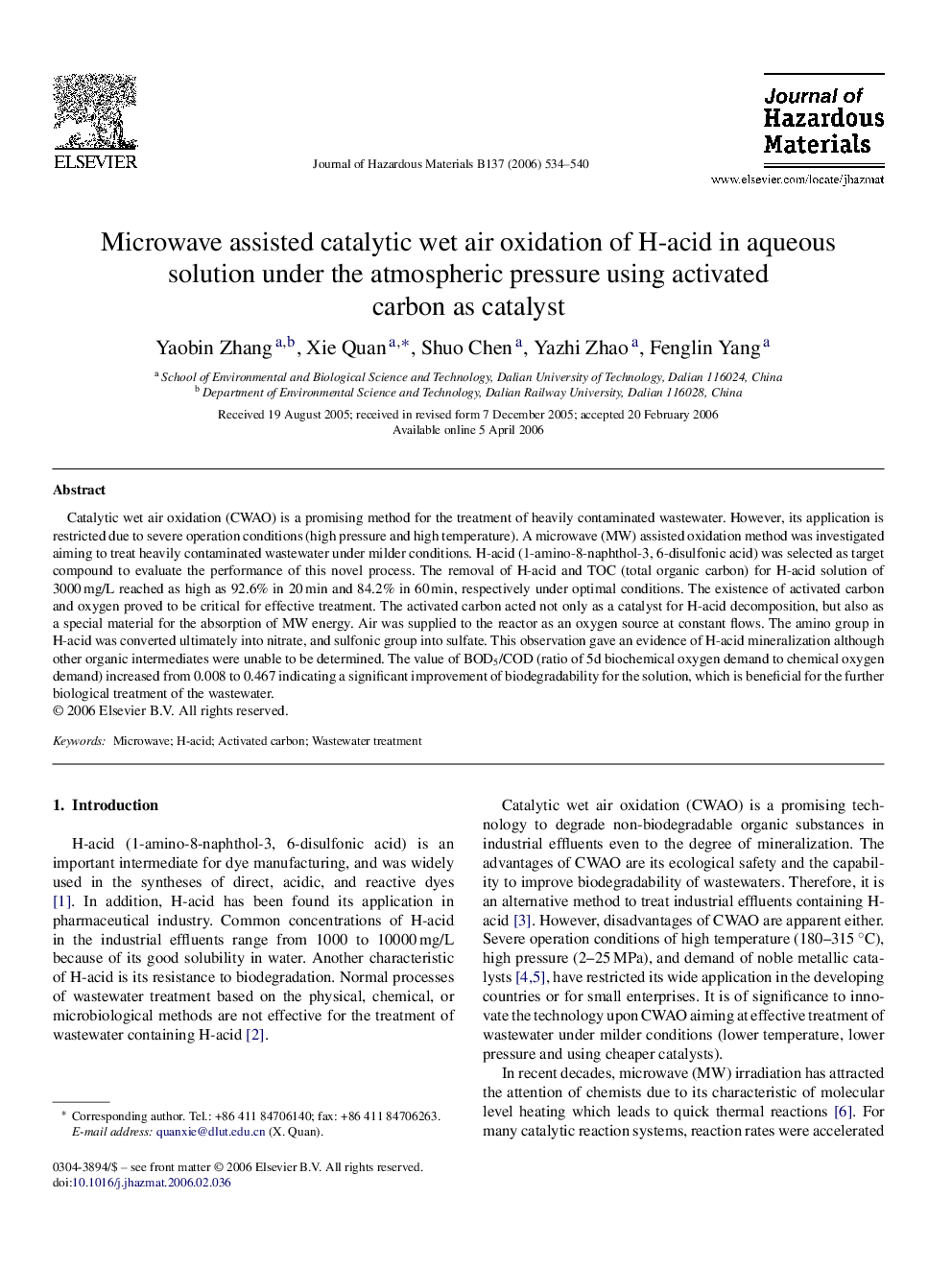| Article ID | Journal | Published Year | Pages | File Type |
|---|---|---|---|---|
| 585481 | Journal of Hazardous Materials | 2006 | 7 Pages |
Abstract
Catalytic wet air oxidation (CWAO) is a promising method for the treatment of heavily contaminated wastewater. However, its application is restricted due to severe operation conditions (high pressure and high temperature). A microwave (MW) assisted oxidation method was investigated aiming to treat heavily contaminated wastewater under milder conditions. H-acid (1-amino-8-naphthol-3, 6-disulfonic acid) was selected as target compound to evaluate the performance of this novel process. The removal of H-acid and TOC (total organic carbon) for H-acid solution of 3000Â mg/L reached as high as 92.6% in 20Â min and 84.2% in 60Â min, respectively under optimal conditions. The existence of activated carbon and oxygen proved to be critical for effective treatment. The activated carbon acted not only as a catalyst for H-acid decomposition, but also as a special material for the absorption of MW energy. Air was supplied to the reactor as an oxygen source at constant flows. The amino group in H-acid was converted ultimately into nitrate, and sulfonic group into sulfate. This observation gave an evidence of H-acid mineralization although other organic intermediates were unable to be determined. The value of BOD5/COD (ratio of 5d biochemical oxygen demand to chemical oxygen demand) increased from 0.008 to 0.467 indicating a significant improvement of biodegradability for the solution, which is beneficial for the further biological treatment of the wastewater.
Related Topics
Physical Sciences and Engineering
Chemical Engineering
Chemical Health and Safety
Authors
Yaobin Zhang, Xie Quan, Shuo Chen, Yazhi Zhao, Fenglin Yang,
